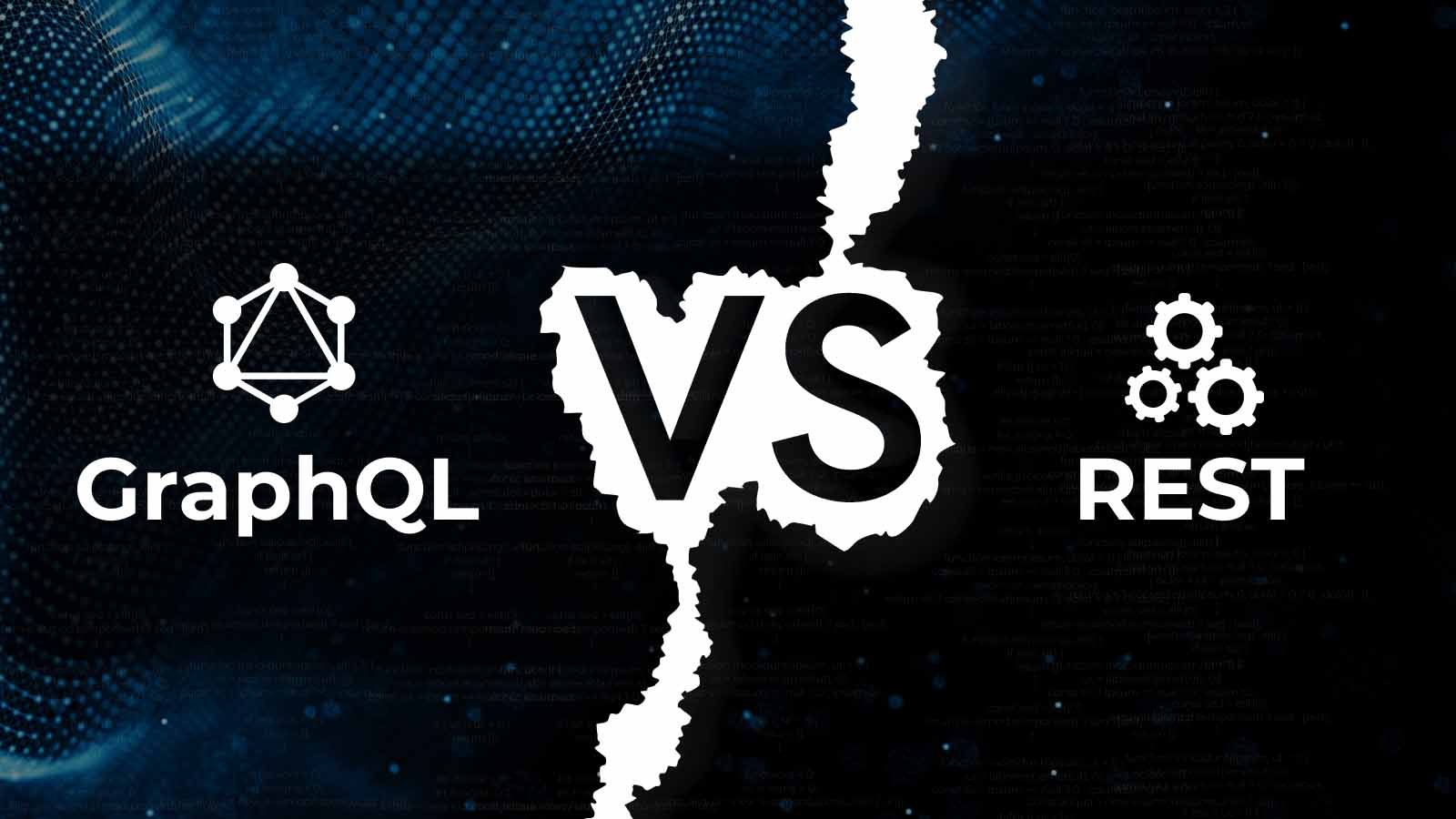🤷♀️GraphQL or REST API: Which One to Pick?🤔🚀
 Sujeet Vishvkarma
Sujeet Vishvkarma
"🤔"GraphQL vs REST: "Alright, imagine you're at a restaurant, and you've got two menus: one in an ancient, yet reliable language (REST) and the other in a fancy, new language (GraphQL). Which one do you choose? That's the decision many developers face. This topic is like finding the perfect dish on a menu—it's important because picking the right API style can make or break your app's performance and user experience. Let's dive in, folks!" 🍔🍕📱
"APIs are like bridges for software. They allow different applications to talk to each other."

🔄What is REST?
A REST API, or Representational State Transfer Application Programming Interface, is a set of rules and conventions for building and interacting with web services. It allows different software systems to communicate over the internet using standard HTTP methods, making it easy for them to exchange data in a structured and organized way. REST APIs are widely used for web and mobile app development, enabling seamless data transfer and integration between various applications and platforms.
"REST, or Representational State Transfer, focuses on how a wide range of resources can be defined and addressed." - Leonard Richardson
The picture illustrates a simple REST system, demonstrating how requests and responses are usually managed.

REST API Workflow :-

🤖 In a nutshell, a REST API functions like a digital messenger, connecting your software (the client) to a server via HTTP methods such as GET, POST, or DELETE. The API processes your requests, interacts with the server, retrieves, creates, or updates data, and then returns the outcome in a standardized format like JSON or XML. This systematic process simplifies data-sharing between different software systems, fostering seamless communication and access throughout the web. 🔌📡💻
💪Benefits of REST :-
Simplicity: REST is easy to understand and use, making it accessible to developers of all levels.
Scalability: RESTful services can handle a large number of requests, making them suitable for scaling.
Statelessness: Each request from a client to a server must contain all the information needed to understand and process it.
Flexibility: REST allows for various data formats, including JSON and XML.
Compatibility: REST is compatible with various programming languages and platforms.
Caching: It supports caching to improve performance by reducing the need for repeated requests.
Uniform Interface: REST's uniform and standardized methods make interactions consistent.
Cost-Effective: It doesn't require as many resources as other architectural styles.
Widely Adopted: REST is the most popular choice for building APIs on the web.
😒Drawbacks of REST:-
Over-fetching and Under-fetching: REST APIs often return a fixed set of data, leading to situations where clients receive more data than they need (over-fetching) or not enough data (under-fetching), which can impact efficiency.
Multiple Requests: To retrieve related data, clients may need to make multiple requests to different endpoints, increasing latency and network traffic.
Versioning Challenges: Changing the API can be complex, and maintaining backward compatibility can be challenging, leading to versioning issues.
Limited Flexibility: REST APIs follow a predefined structure, making it hard for clients to request data in a customized format, potentially causing inefficiency in data retrieval.
Security: Ensuring the security of a REST API can be more challenging due to the variety of endpoints and different methods of authentication.
🚀What Is GraphQL?
GraphQL is a modern and flexible API technology that empowers clients, like apps or websites, to request precisely the data they need from a server. Unlike traditional REST APIs, where you get a fixed set of data, with GraphQL, you can query only what's relevant, reducing over-fetching and under-fetching of data. This dynamic approach enhances efficiency and makes it an attractive choice for developers seeking tailored data retrieval and optimization for their applications.
The most thrilling aspect of GraphQL is its capability to offer all the data from a single endpoint.

GraphQL Workflow :-

In GraphQL's workflow, the client, representing a user or application, sends queries or mutations to the GraphQL server (a central piece of the puzzle). The server then leverages resolver functions to fetch and process data from the database, ensuring that only the requested information is retrieved. After processing, a response is sent back to the client, fulfilling its specific data needs and enhancing the overall user experience. GraphQL's power lies in its ability to give clients precise control over their data interactions while reducing unnecessary data transmission, making it a modern favorite in web development and app creation. 🚀📊📡👨💻.
💪Benefits of GraphQL:-
Precise Data Retrieval: GraphQL allows clients to request exactly the data they need, minimizing over-fetching and under-fetching.
Efficiency: GraphQL allows clients to request only the data they need, reducing over-fetching and under-fetching, which optimizes data transfer and improves performance.
Flexibility: Clients have the power to define their data requirements, enabling rapid development and adaptation to changing application needs.
Reduced Round-Trips: With GraphQL, multiple related requests can be combined into one, reducing the number of network round-trips.
Strongly Typed: GraphQL enforces a strong type system, making it easier to understand and validate the data structure.
Real-Time Data: It supports real-time updates, making it suitable for applications requiring live data, like chat apps or collaborative tools.
Evolvability: GraphQL allows for versionless APIs, ensuring backward compatibility as your application evolves.
GraphQL's top advantage is its single API endpoint, which simplifies data access. Unlike REST APIs with multiple endpoints for various data, GraphQL streamlines information retrieval by requiring only one request. The difference is evident in the diagram below, where GraphQL's server offers a single entry point to access resources, while RESTful APIs demand multiple endpoints for distinct data sources.

✔Why Use GraphQL Instead of REST?
Use GraphQL instead of REST when you need flexible data retrieval, reduced over-fetching, real-time capabilities, and a single endpoint for precise requests. GraphQL empowers you to tailor data retrieval to your needs, enhancing efficiency and enabling dynamic applications.
😒Drawbacks of GraphQL:-
Complexity: GraphQL's flexibility can lead to complex query structures, making it challenging to manage and understand, especially in larger projects.
Learning Curve: Developers, especially those familiar with REST, may require time to adapt to GraphQL's unique query language and concepts.
Over-fetching: Without careful query design, clients can unintentionally request excessive data, leading to performance issues.
No Built-in Caching: GraphQL does not inherently support server-side caching, which can result in increased server load and slower response times.
Security Concerns: Inadequate query validation or malicious queries can put a strain on server resources, potentially leading to security vulnerabilities.
🙌Similarities between GraphQL and REST:
Both GraphQL and REST use HTTP GET requests via a URL to retrieve data, returning it in JSON format.
They allow the specification of resource IDs for data retrieval.
In both, GraphQL's fields and REST's endpoints call server functions.
Both have entry points for accessing data, where GraphQL fields align with REST endpoints.
Both can distinguish between APIs intended for data reading or writing.
🐱👤GraphQL vs 🐱🚀REST

Architecture Wise:
GraphQL: Employs a flexible and unified schema to enable precise data retrieval from a single endpoint.
REST API: Utilizes multiple endpoints for different resources and follows a more structured approach with fixed endpoints.
Performance :
GraphQL outperforms REST due to its single endpoint, reducing network latency. It efficiently retrieves only the necessary data.
REST APIs rely on multiple endpoints, which may lead to performance issues due to additional network requests and potential over-fetching.
Query Complexity:
GraphQL excels in handling complex queries, thanks to its unified endpoint. Clients can request precisely what they need, optimizing data retrieval.
REST APIs are constrained by separate endpoints, which restrict query complexity and can lead to multiple requests for related data.
Popularity and Community Support:
GraphQL is rapidly gaining popularity with a growing community. Resources for learning and development are increasing, making it an attractive choice for modern applications.
REST APIs already enjoy widespread community support and have been used across a wide range of applications. It remains a solid and well-supported choice.
Learning Curve:
GraphQL presents a steep learning curve, requiring substantial domain knowledge and software engineering expertise. Beginners may find it challenging to build complex applications.
REST API is beginner-friendly and integrated into many programming languages and frameworks, making it easier to grasp and start using.
Versioning and Backward Compatibility:
GraphQL's schema evolution approach eliminates the need for versioning, simplifying updates and maintaining backward compatibility.
REST APIs often require versioning to manage changes, potentially leading to fragmented APIs and compatibility issues over time.
Resource Over-fetching and Under-fetching:
GraphQL minimizes over-fetching and under-fetching issues by allowing clients to specify their data requirements precisely, resulting in efficient data retrieval.
REST APIs may lead to over-fetching or under-fetching problems because they provide fixed responses, potentially transmitting unnecessary data or requiring multiple requests for related information.
Real-time Data and Subscriptions:
GraphQL excels in supporting real-time updates through subscriptions, making it a suitable choice for dynamic and interactive applications where data changes in real-time.
REST APIs require additional tools or workarounds to handle real-time data efficiently, adding complexity and potentially impacting performance.
This comparison provides a clear overview of the strengths and considerations of both GraphQL and REST APIs, helping developers make informed decisions for their specific project needs.

🖐Final Conclusion
In the battle of APIs, it's all about finding the perfect match for your project. GraphQL offers flexibility and precision, while REST provides simplicity and familiarity. Choose based on your project's unique needs and enjoy the coding journey! 💻🛠️🚀
Choosing between GraphQL and REST API depends on your specific project requirements. If you prioritize flexibility, reducing data over-fetching, and real-time capabilities, GraphQL might be the better fit. However, if you have a simple project, established conventions, and a straightforward learning curve in mind, REST remains a solid choice. Nowadays, the decision often leans toward GraphQL for modern applications, but REST still shines in many scenarios.
In the end, whether you go GraphQL or REST, just remember: APIs are like pizza; there's no such thing as a bad one! 🍕😄
✌Hey there, tech-savvy pals! It's your buddy, Sujeet, and we're wrapping up today's thrilling journey into the world of "GraphQL vs. REST," the ultimate showdown of API superstars! 🎉
From their epic showdown in the world of data retrieval to their unique strengths and quirks, GraphQL and REST are ready to battle it out for your developer heart! 🥊
So, whether you're a coding connoisseur, an API aficionado, or just a curious explorer peeking into the tech battlefield, stay tuned for this epic face-off. Because we're diving into the world of APIs, and it's gonna be a showdown you won't want to miss! 💻
Keep your tech swords sharp and your coding shields ready, because this battle's about to get lit! 🔥💡
🖐Feel free to drop a comment if you found this info helpful and valuable. I'd love to hear your thoughts and feedback on the content. 💖 Thank you!
Subscribe to my newsletter
Read articles from Sujeet Vishvkarma directly inside your inbox. Subscribe to the newsletter, and don't miss out.
Written by

Sujeet Vishvkarma
Sujeet Vishvkarma
SIH finalist 2K22 🚀 | 💙Full Stack Developer💙,📢Learn in Public🌎,💖Open Source, Technical Writing ✍ 🟠 Hungry😋 for More📚 Knowledge 🤠